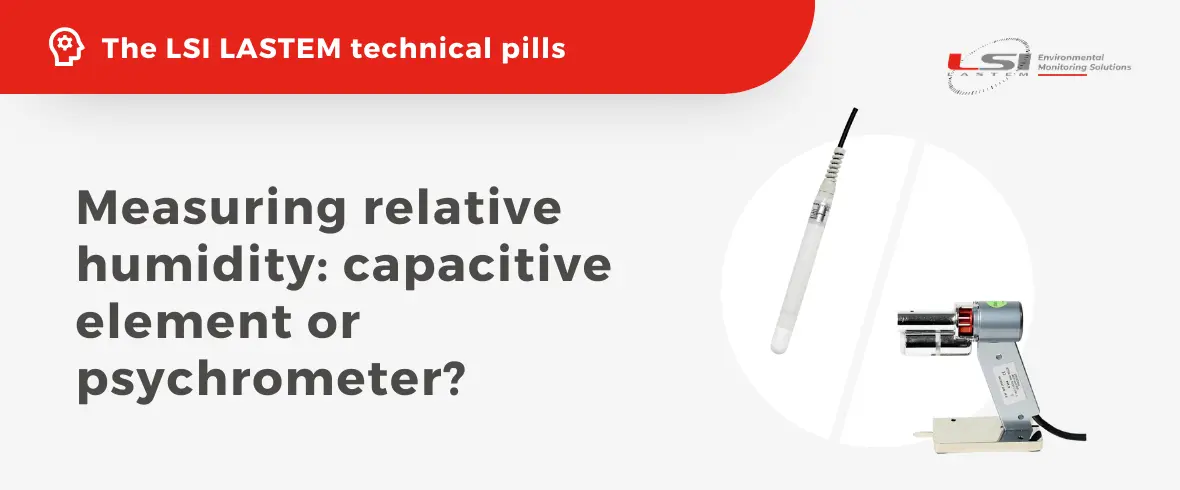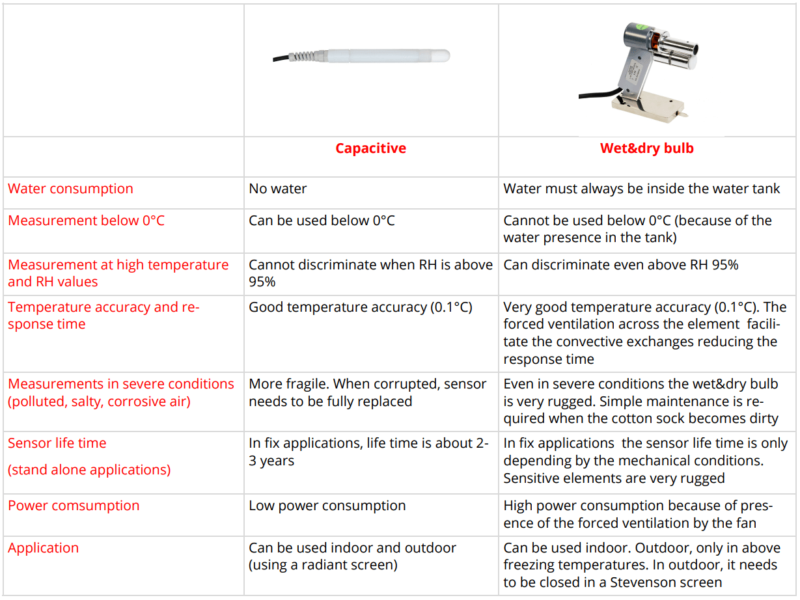Measuring relative humidity: capacitive element or psychrometer?

The measurement of air relative humidity is fundamental in many sectors, including meteorology, microclimate and the control of industrial processes. Relative humidity, like any other measurable quantity, can be calculated in two ways: a “direct” one, in which a sensor provides the relative humidity value without the need to measure other quantities and an “indirect” one, which is based on calculations derived from the measurement of correlated quantities.
Consequently, it is possible to divide the different measuring principles and their sensors into two main categories:
- Direct hygrometers: sensors that have a functional relationship between relative humidity and a directly measured physical property, such as capacitive hygrometers.
- Indirect hygrometers: sensors that use a thermodynamic transformation to measure relative humidity indirectly, therefore based on thermodynamic relationships. For example, psychrometers operate through a quasi-adiabatic saturation transformation to determine relative humidity.
In this technical pill we will list the main pros and cons of measuring the air relative humidity with a capacitive sensor and with a psychrometric sensor. This comparison will allow those who will have to choose one of the two sensors for indoor measurements to orient their choice according to their needs, knowing their advantages and disadvantages.
Operation of the temperature and relative humidity sensor with capacitive element
The capacitive relative humidity sensor is composed of a hygroscopic dielectric material placed between two electrodes mounted on a plate, to form a small capacitor. The hygrometric balance between the insulating material and the environment changes the relative permittivity of the dielectric material. As the amount of water vapor in the air increases, the sensor’s dielectric constant increases, producing a different measurement of capacitance, which corresponds to the relative humidity level. This device is sensitive to relative humidity because it is in thermal equilibrium with the environment to be characterised. Furthermore, the electrical characteristics of the sensor mean that the energy exchanged with the environment for heating is negligible.
Operation of the dry bulb and wet bulb psychrometric temperature and relative humidity sensor with forced ventilation
The operating principle of this device is simple. One thermometer measures the air temperature, known as the dry bulb temperature. The second thermometer is wrapped with gauze that is constantly wet with water known as a wet bulb. Both elements are constantly exposed to a current of air. The water in the wet gauze evaporates, absorbing heat from the sensing element and thus reducing the wet bulb temperature read on the thermometer.
The drier the environment, the greater the importance of the evaporation process, which results in a significantly lower wet bulb temperature than the dry bulb temperature. The relative humidity value is calculated based on the difference between the two temperatures and is obtained using the psychrometric diagram (ASHRAE PSYCHROMETRIC CHART No. 1).
Indirect hygrometers are generally more accurate and often used in laboratories as standard reference.
Which technology to choose?
The choice between capacitive sensors and dry and wet bulb sensors depends on the specific needs of the application. Here is a summary table of the advantages and disadvantages of both technologies:

Conclusions
The measurement of air relative humidity is fundamental in many applications and the choice between sensors with different sensitive elements depends on specific needs. Both technologies have advantages and disadvantages and the final decision should be based on the environmental conditions and accuracy required for the specific application.
LSI LASTEM offers both types of relative humidity sensors to meet different customer needs. For further details on the available products, you can visit the LSI LASTEM website: Temperature and Relative Humidity
